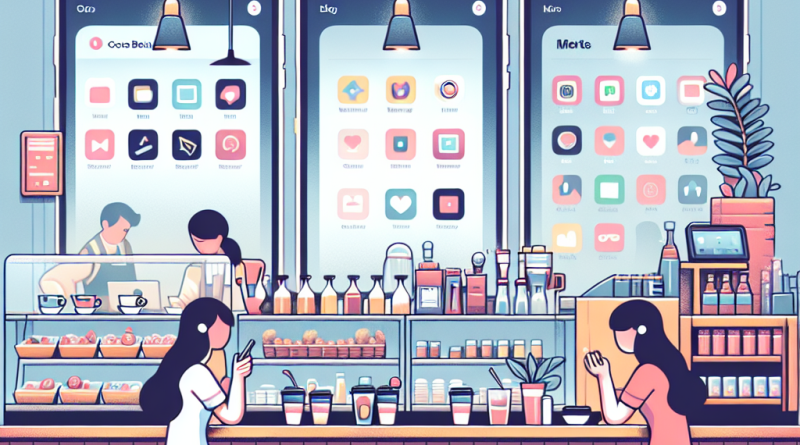How One Indie Developer Leveraged iOS Beta Features to Revolutionize Mobile Photography
Innovation often emerges not from massive corporations, but from bold individuals willing to take risks and experiment. At iphone26.com, we believe the power of mobile development lies in the synergy between cutting-edge iOS tools and visionary entrepreneurial spirit. In this post, we’ll explore a fascinating real-life case study of how a solo developer harnessed iOS Beta & Developer Features to disrupt mobile photography—and, in doing so, offer tips to inspire your own journey in the digital industry.
Identifying the Opportunity: The Gap in Native Camera Tools
In the saturated market of photography apps, it’s rare to see new players making meaningful impact. But that didn’t deter Julian Lin, an independent developer with a keen eye for both visuals and software design. As an iPhone photography enthusiast, Julian constantly found himself limited by the native app’s interface, particularly in professional settings requiring advanced configuration controls.
Recognizing that many users craved DSLR-like features on mobile devices, Julian saw a compelling gap—and an incredible opportunity. With the upcoming iOS beta release, he turned to Apple’s latest development tools for a solution.
Utilizing iOS Beta APIs for Pro-Level Camera Controls
Julian’s vision came to life through the integration of iOS’s new beta-level AVFoundation and Metal APIs. These powerful frameworks—available only in the developer preview at the time—offered granular control over camera exposure, white balance, ISO, and depth field.
To enhance responsiveness, Julian linked these controls with SwiftUI components, giving users real-time insight and hands-on customization. This eliminated delays and confusion often associated with pro gear settings, offering an intuitive experience tailored for serious creators.
Tip: Always monitor Apple’s beta documentation for potential gaps in mainstream tools you can address with niche expertise. The future is often hidden in the footnotes of API release notes.
Implementing On-Device AI and Neural Engine for Real-Time Adjustments
What truly set Julian’s app apart was its real-time enhancement powered by the A-series Neural Engine. Using Create ML, he trained custom vision models to identify common photography errors in lighting, focus, and framing. Integrated through CoreML on iOS beta, the app could proactively offer suggestions—or make automatic corrections—before the shutter even clicked.
This created a revolutionary user experience: photographers of any level could produce images with professional lighting balance, reduced noise, and optimized angle—all on the fly.
Tip: Look beyond app features—optimize user workflows. The Neural Engine’s real power lies in saving the user cognitive load, not just enhancing pixels.
Testing the Limits: Leveraging Apple’s TestFlight for Agile Feedback Loops
Julian’s dedication to user experience extended to his approach in beta testing. By using Apple’s TestFlight, he crafted multiple test environments simulating low light, outdoor scenes, and motion blur. He invited over 500 TestFlight users—photographers, casual users, and professional reviewers—to run the app daily and report results using embedded Feedback APIs introduced in the current iOS beta.
Quick response cycles helped him introduce 12 micro-updates in just six weeks. This allowed Julian to outpace industry timelines and deliver an app that felt co-developed by its users.
Tip: Use beta cycles not just to test your product, but to build a community around it. Iterative development ties users to your vision.
Expansion and Monetization Strategies Using iOS SDK
With the app gaining traction, Julian leveraged in-app purchases and subscriptions using the updated StoreKit framework. He introduced tiered features: free users got core DSLR-like controls, while premium users accessed AI tools, manual histogram edits, and advanced iphone camera tips.
He further integrated SharePlay and iCloud Tools, enabling real-time photo reviews during FaceTime sessions—an organic marketing channel leveraging built-in iOS social functionality.
Tip: Monetization starts with user trust. Beta users are your most devoted evangelists; design premium features to reward—not exploit—them.
Lessons from Vision to Venture
Julian’s journey underscores the immense potential hidden in Apple’s beta environment. What began as dissatisfaction with a camera interface became a product with over 1.2 million downloads and a thriving creator community. His story is an example of wielding developer tools with entrepreneurial intent—solving real-world problems with scalable, elegant solutions.
Key Takeaway: The next big innovation doesn’t demand a massive team—just the courage to explore future technology before it becomes mainstream.
At iphone26.com, we’re committed to uncovering and sharing the stories of those reshaping the digital frontier. Whether you’re diving deep into iphone camera tips or exploring iOS betas for the next game-changing app, remember: every visionary startup once started with a simple prototype.
To get the best in Mobile Communication Solutions, stay curious and stay ahead—start building with iOS beta today.

